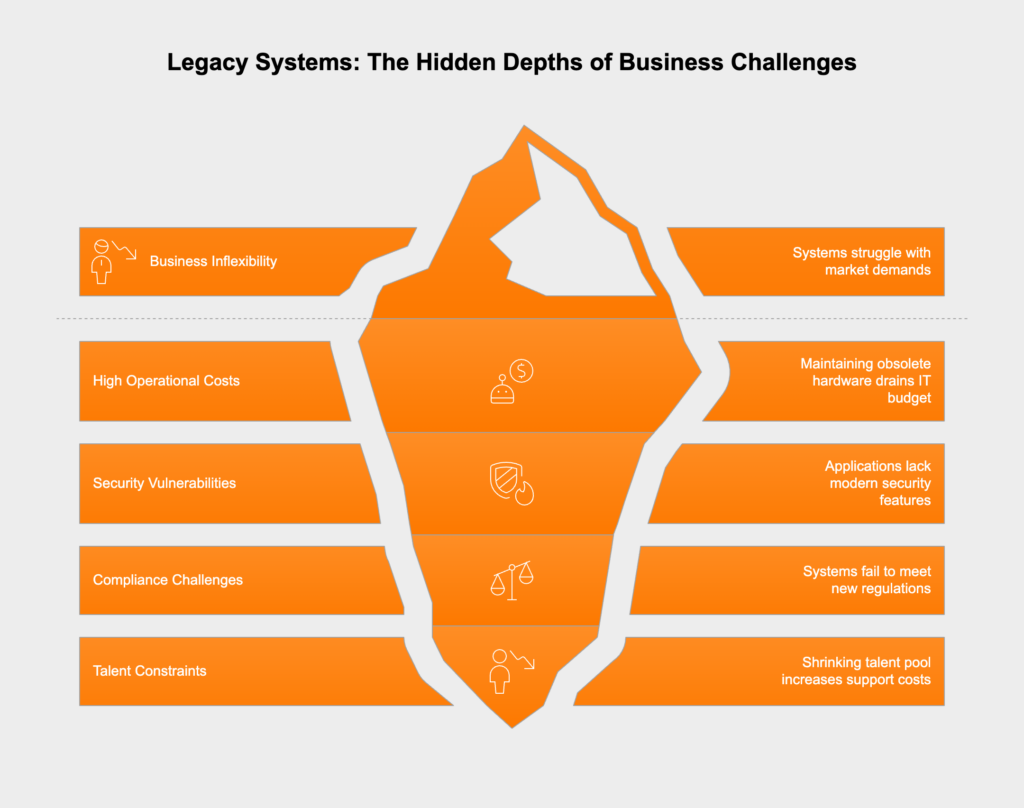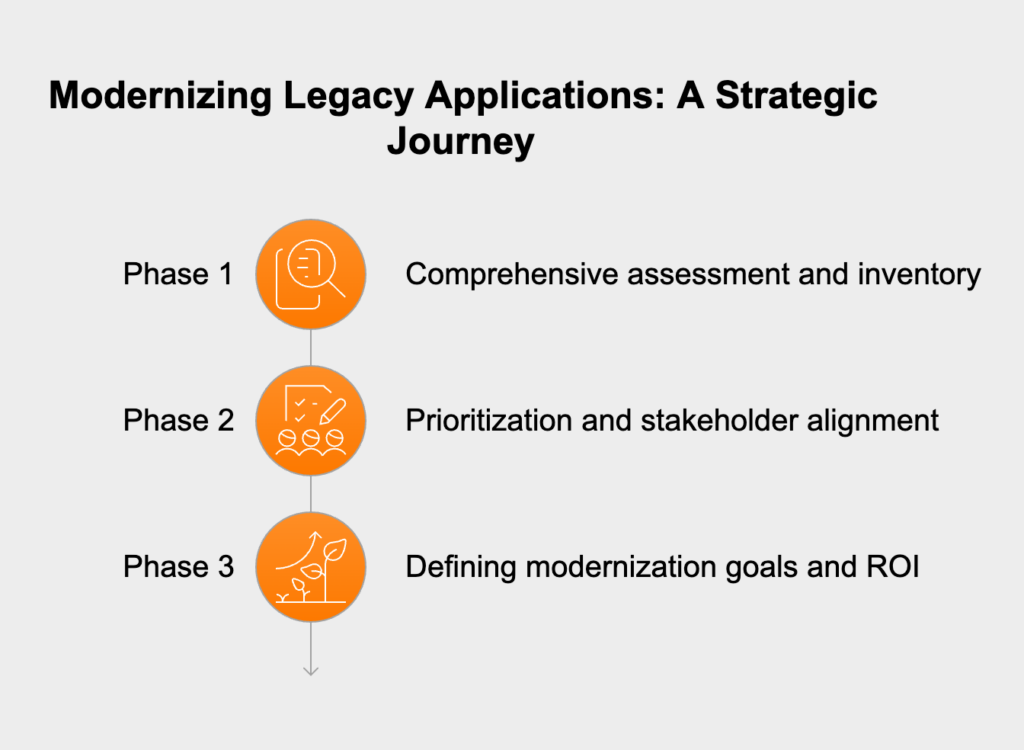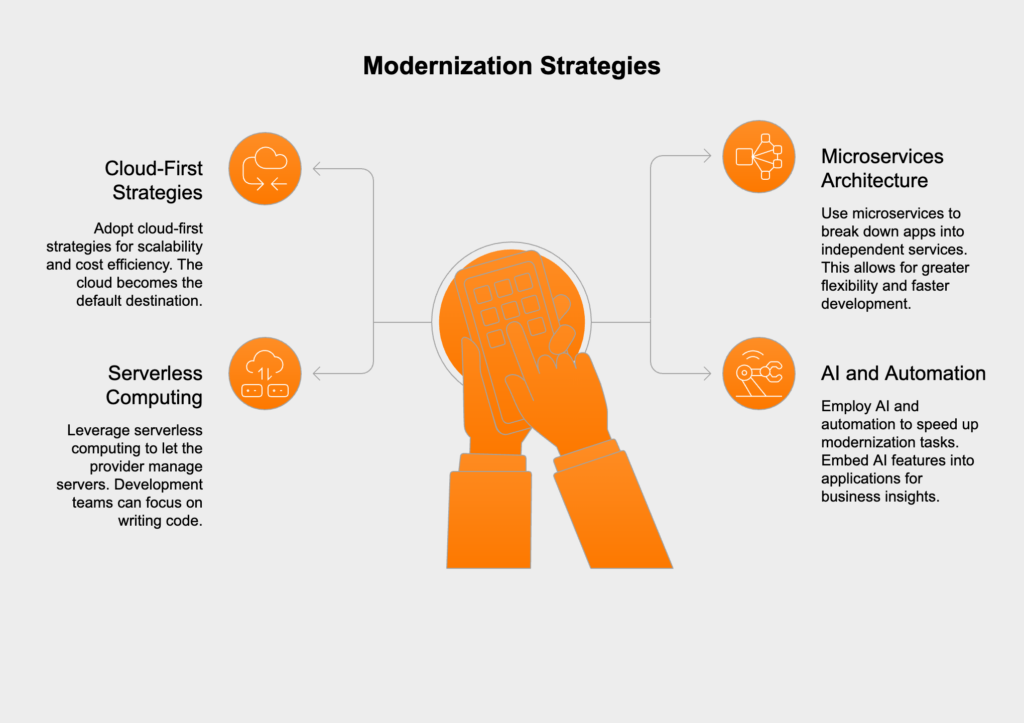Modernizing Insurance Frontends with Java-Based Frameworks like Vaadin
- June 07
- 13 min

For today’s Chief Technology Officers, legacy applications aren’t just technical debt—they’re a dead weight on the business. These old systems, often monolithic and running on outdated tech, create an organizational drag that kills competitiveness. This isn’t just an IT headache anymore; it’s a core business risk that poisons everything from operational agility to financial stability.
Letting these systems linger creates a domino effect of risk. Each problem feeds the next, trapping the business in a cycle that stifles growth and innovation. As a CTO, you have to grasp the full extent of these threats to make a credible case for legacy modernization.

Getting rid of legacy tech isn’t a one-off project; it’s an ongoing strategic commitment. To succeed, you need a structured framework that ties every technology decision back to a business goal. This approach turns a potentially chaotic mess into a predictable, manageable process focused on delivering real, measurable results.
First, you need a brutally honest inventory of your current application landscape—and I mean more than just a list of names. You have to catalog every legacy app, detailing its
Then, evaluate each one against key business and technical criteria:
This is also where you have to get real about each application’s technical debt, security posture, performance bottlenecks, and compliance status.
Once you have that full assessment, it’s time to prioritize. Not all legacy systems are equally problematic, and a “big bang” overhaul is almost always a bad idea.
Strategic prioritization means weighing an application’s importance to the business against its potential modernization ROI, the project’s difficulty, and how well it aligns with long-term company goals. Getting buy-in from executives and key stakeholders at this point isn’t optional. You need a clear, data-driven case for your proposed sequence to get the commitment and resources to see this through.
Finally, before a single line of code gets written, you must define what success looks like for each application. Vague goals like “improving the system” won’t cut it. You need specific, measurable targets. Are you aiming for a
Every goal needs to be tied directly to a business objective with a clear return on investment (ROI), proving the tech effort delivers real business value.

With your portfolio assessed and prioritized, you face the crucial choice: which modernization path to take for each application? There’s no one-size-fits-all answer. The right strategy depends on the app’s technical condition, its value to the business, and your company’s appetite for risk. Generally, the options boil down to a few distinct approaches, each with its own trade-offs in cost, risk, and business impact.

Any large-scale IT modernization project is complex and risky, with budget overruns and operational hiccups always looming. As a CTO, your ability to manage these risks is just as vital as the technical execution. You can’t just react to problems; you need a proactive plan to steer the project through its complexities and deliver on its promises.
First, stop treating security and compliance like a checkbox at the end of the project. You have to build these controls into every phase of the modernization lifecycle—a practice known as “shifting left.” This means conducting security reviews during design and automating compliance checks in your development pipeline, ensuring the new architecture is built on a zero-trust security model. Getting this right from the beginning saves you from expensive fixes and prevents you from accidentally introducing new vulnerabilities.
Second, don’t try to boil the ocean. Instead of tackling your entire portfolio at once, start with a pilot project on a low-risk, high-impact application. A win here serves as a powerful proof-of-concept. It lets your team test new tech and refine its process in a controlled setting. More importantly, it demonstrates tangible value to the business early on. This early win is your best tool for building momentum and securing support for the bigger push.
Finally, remember that modernization is as much a cultural and operational shift as it is a technical one. The slickest new system is useless if your teams aren’t ready for it. A solid change management plan is non-negotiable. This means clear and continuous communication with all affected stakeholders to manage expectations and squash rumors. It also demands a real investment in training to get people skilled up on the new tools and workflows, which is key to reducing resistance and avoiding a productivity nosedive during the transition.

When planning your modernization roadmap, you have to incorporate the major technology trends defining next-gen IT. These aren’t just buzzwords; they are tools that make modernization possible and unlock the scalability and efficiency you’re after. Building on these trends ensures your new systems are future-proof, not just a fix for today’s problems.

